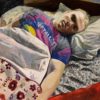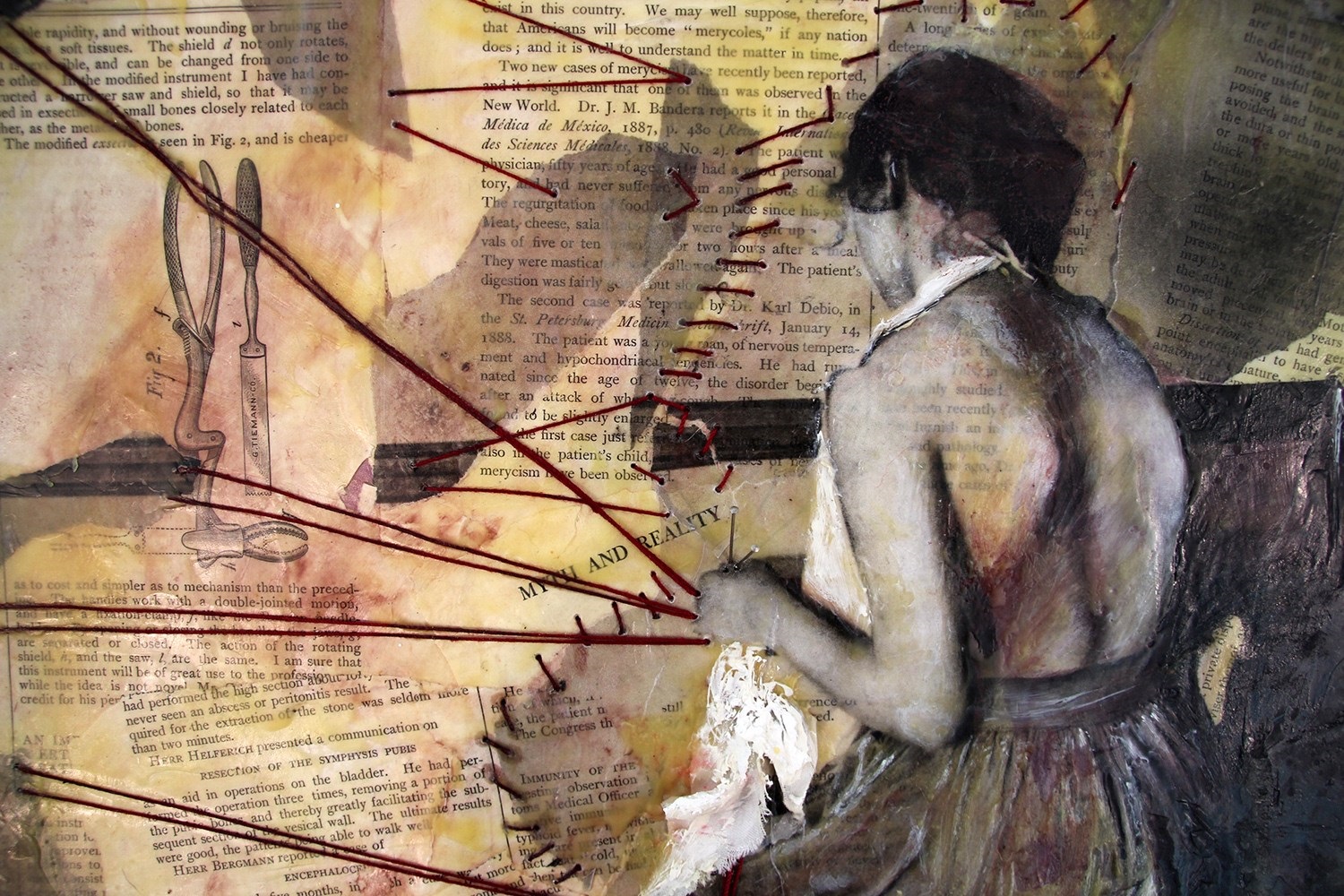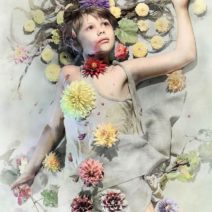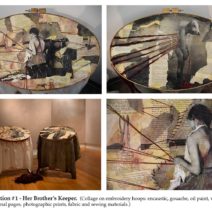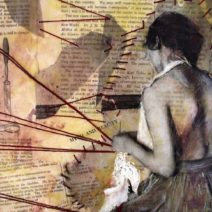MANDEM
St. Persephone (Medical Trials of the Saints) (2020)
photography
18 x 12 in.
$275
Domestication #1 – Her Brother’s Keeper (2015)
mixed media collage on embroidery hoops (encaustic, gouache, oils, vintage medical journal pages, photographic prints, fabric, sewing materials)
36 x 60 x 18 in.
$1,350
St. Persephone (Medical Trials of the Saints) is a hand-colored photograph that shows a child Persephone surrounded by flowers, her mouth and hands stained with pomegranate juice. Visually, it is in dialog with the photographic collage-and-watercolor techniques developed and shared by Victorian women.
For the youngest member of MANDEM, this self-portrait reflects an intense interest in nature, collecting and arranging flowers, and in the story of the girl-child who came to control the seasons by transcending borders. For the elder MANDEM(s), it discusses a painful awareness of how winter (both literal and metaphorical) can seize a person and pull them out of the world for months at a time — and the difficulty of surrendering to that inevitability, of breaking open a celebratory pomegranate and facing the Underworld that needs our strength just as surely as the surface world does.
May St. Persephone bring solace to those in isolation, those unable to visit loved ones, and those cut off from the world and comforts they’ve known. Like Persephone’s absence is a promise that springtime will return, your physical distance gives the gift of future life.
And for those who will soon journey into the Underworld, may you be filled with St. Persephone’s resolve and fearlessness.
Domestication #1 – Her Brother’s Keeper (2015) is a free-standing mixed-media work that draws from the ancient story of Ariadne and her half-brother, the Minotaur. As a goddess of weaving, dancing, and labyrinths, for millennia Ariadne held control over her brother’s home. But when the myth transitioned to patriarchal Greek culture, Ariadne betrayed her brother to Theseus (who eventually betrayed her in return). The images in this work explore the many tensions in this myth: the way that a home may be simultaneously a sanctuary and a prison, the way that gendered domesticity can become toxic to all involved (trapping women into silent subservience and casting men as violent beasts), and the way that our familial and visceral relationships can still bind us together.
The textual materials used here are antique medical journals whose texts deal with childbirth, circumcision, madness, and the medicalization of gender roles.
© MANDEM

